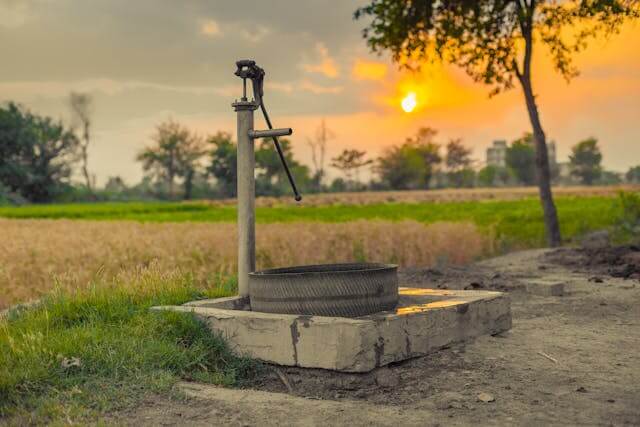Water planning begins with calculating daily consumption and matching it to reliable sources. Tiny house living dramatically reduces water usage through conscious conservation, efficient fixtures, and simplified lifestyles. Average consumption in 300-square-foot tiny homes ranges from 40-100 gallons daily for two people — roughly half the 80-100 gallons per capita typical in standard homes.
Breaking down usage categories helps identify conservation opportunities: drinking and cooking (2-4 gallons), dishwashing (4-8 gallons), showering (10-25 gallons per person), toilet flushing if not composting (15-30 gallons), hand washing and hygiene (3-6 gallons), laundry if on-site (20-40 gallons per load), and outdoor use for gardens (varies seasonally). Most tiny house owners install low-flow fixtures reducing usage 40-60% — 1.5 GPM shower heads instead of 2.5 GPM, 0.5 GPM faucet aerators, and 1.28 gallons-per-flush toilets if using flush toilets.
Four primary water sources serve off-grid tiny homes, each with distinct advantages and limitations:
Rainwater Harvesting
Rainwater collection captures roof runoff through gutters into storage tanks. Advantages include zero pumping costs, usually excellent quality requiring minimal treatment, legal simplicity in most eastern states, and low environmental impact. Challenges involve rainfall variability requiring large storage, seasonal droughts depleting supplies in dry climates, roof contamination from bird droppings or debris, and legal restrictions in some western states.
- •Viability depends on local rainfall patterns.
- •Calculate potential collection: roof area (sq ft) × annual rainfall (inches) × 0.623 (conversion factor) × 0.90 (collection efficiency) = annual gallons.
- •A 400-square-foot roof in Portland, Oregon (43 inches annual rainfall) yields: 400 × 43 × 0.623 × 0.90 = 9,693 gallons annually — adequate for a couple using 50 gallons daily (18,250 gallons annually) if supplemented with conservation and backup.
- •The same roof in Phoenix (8 inches annual rainfall) yields only 1,796 gallons — inadequate as primary source without massive storage or severe conservation.
Wells (Groundwater)
Drilled or dug wells access underground aquifers providing reliable year-round water in most regions. Advantages include consistent supply independent of rainfall, generally good quality with natural filtration through soil, once-installed infrastructure lasting decades, and property value increase. Challenges include expensive drilling ($15-$150/foot, $3,000-$15,000 typical), permitting requirements everywhere, uncertain water quality requiring testing, electricity needed for pumping (300-800 watts), and aquifer depletion risks in drought-prone areas.
Well depth depends on local water table — 25-50 feet in wetlands, 100-300 feet in most regions, 400+ feet in arid areas. Shallow wells (under 100 feet) cost $3,000-$8,000 but face contamination risks and seasonal variations. Deep wells ($8,000-$20,000) provide better quality and reliability but require more powerful pumps.
Springs (Surface Water)
Natural springs provide gravity-fed water from hillside aquifer discharge. Advantages include free water after initial development, zero pumping costs if source is uphill from home, often excellent quality from underground filtering, and minimal environmental impact. Challenges include limited availability (specific geology required), inconsistent flow varying seasonally, legal complexities around water rights and permits, development costs for collection boxes and piping ($2,000-$6,000), and contamination risks from surface runoff.
Spring development requires careful site assessment: consistent year-round flow (minimum 1-5 gallons per minute), water quality testing for bacteria and contaminants, legal water rights secured before development, and proper collection infrastructure preventing contamination.
Surface Water (Streams/Lakes)
Rivers, streams, and lakes provide water through pumping and extensive filtration. Advantages include abundant supply in water-rich regions and established permitting processes for water rights. Challenges include heavy filtration requirements for sediment, bacteria, viruses, and chemicals; pumping costs (electricity or manual); complex water rights often prioritizing senior rights holders; seasonal variations affecting availability; and environmental regulations protecting aquatic ecosystems.
Surface water serves best as backup or non-potable source (irrigation, washing) rather than primary drinking supply due to treatment complexity.
